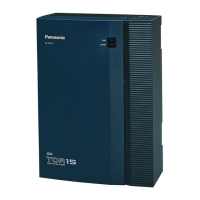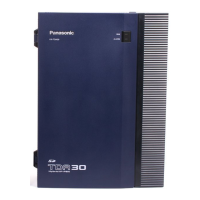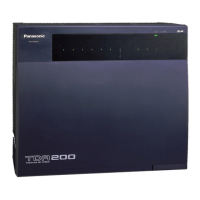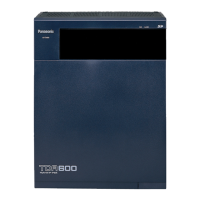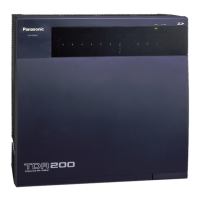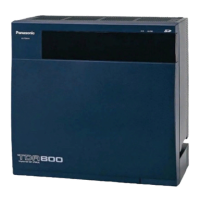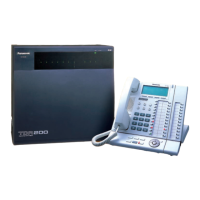Conditions
• To use this feature, call forwarding to CO lines must be enabled through COS programming.
PC Programming Manual References
3.34 [1-2] Portable Station—PS Registration and De-registration
PT Programming Manual References
[690] PS Registration
Feature Manual References
6.1.6 FWD (Call Forwarding)
19.1.3 Voice Mail (VM) Group
Description
A
VPS can be connected to extension ports of the PBX. The extension ports make a group, called a VM group.
This group has a floating extension number. The VM group can be the destination for redirected calls and
incoming calls. When receiving a call, the VPS can greet the caller offering them the option to leave a message
or dial a number to reach the desired party. The VPS can record the message for each extension and leave
notification on the corresponding extension, if the called extension is not able to answer calls.
1. VM Group Type
Type Description
VM (DTMF) Group
A group of SLT ports which use the Voice Mail DTMF
Integration features.
A maximum of 2 (for KX-TDA50/KX-TDA100/KX-TDA200)
or 8 (for KX-TDA600) groups can be assigned.
VM (DPT) Group
A group of DPT ports which use the Voice Mail DPT (Digital)
Integration features.
With the KX-TDA50:
• One VM (DPT) group can be assigned.
• A
maximum of 4 ports (8 channels) of the VPS can form
a group.
With the KX-TDA100/KX-TDA200/KX-TDA600:
• A maximum of 2 (for KX-TDA100/KX-TDA200) or 8 (for
KX-TDA600) KX-TVS/KX-TVP systems can be
connected to the PBX.
• A maximum of one VM (DPT) group per KX-TVS/
KX-TVP can be assigned.
• A maximum of 12 ports (24 channels) of the VPS can
form each group.
Document Version 2010-11 Feature Manual 331
19.1.3 Voice Mail (VM) Group

